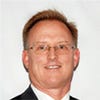Edge computing is a compelling option for telcos looking to balance tightening finances with increasing demands for bandwidth and processing speed.

Edge computing presents opportunities for telcos to re-evaluate their business models to diversify their sources of revenue beyond the traditional. Driven by the Internet of Things, video-on-demand and big data, edge computing moves data centers closer to the end user at the edge of the network, optimizing content delivery and data processing.
By converting empty floor space into an edge computing data center, telcos can not only expand their business, but provide better service by reducing latency and lowering transmission costs.
Why telcos?
In today's diversified data center landscape, the lines are blurring between telcos, network carriers, traditional colocation providers and cloud data center service providers. Telcos are uniquely positioned to benefit from the edge computing trend due to their location at the literal edge of the network where they are closest to the user base. Additionally, because of the inherent nature of their business, telcos likely already have the critical infrastructure (including high-bandwidth fiber) necessary to support this new data center model. Lastly, the recent update from copper to fiber has readied telco networks for speed and scale while the transformation of the physical switch to the software switch has shrunk the footprint needed for equipment, opening up space within central offices that can be used for new revenue generating purposes.
Where to start?
In order to begin the transformation journey, telcos will need to address five critical criteria:
Space: a commodity that has become available with the move from analog to digital.
Power & cooling: it's likely some forms of these systems already exist within the central office space. However, telcos should determine if the current systems will be sufficient or if additional infrastructure will be necessary. At the very least, they will need an uninterruptible power supply (UPS), downstream power distribution unit (PDU) and critical air conditioning within the data center space. Furthermore, in order to ensure adequate power, it may also be necessary to increase utility service, add generator capacity or install a complete AC system.
IT racks: racks will be needed to support the IT equipment that is installed.
Security: cameras and access control systems will be necessary to regulate which employees are able to enter the data center and when.
During the planning phase, personnel involved in the build may also want to consider utilizing reference designs (think of them as building blueprints) that outline different solutions and costs based on the existing environment, budget constraints and end goals.
Additionally, should existing space be too limited for a full mechanical, electrical and power buildout, telcos can utilize prefabricated power, cooling and, if necessary, IT, components. These modular building blocks enable a "build-as-you-go" approach that allows operators to easily and quickly add or remove power and cooling capacity, as well as IT space, as necessary throughout the lifecycle of their data center.
ROI
The decision to transform an existing telco business into one that also provides data center components isn't to be taken lightly, but it is a decision that will pay off. Consider this example:
Costs: a central office with enough space to construct a 24-rack environment that supports 5kW per rack, for a total load of 120kW. Assuming the need to build out infrastructure including generators, UPSs, AC, racks and security, a telco provider could expect construction costs to reach between $1-1.5 million.
Return on investment: a telco provider adopting a colocation data center model, in which the telco builds and provides the data center environment and rack space while individual customers are responsible for the purchase, installation and management of the IT equipment they put in, could look to rent each 5kW rack for between $1,500-2,000. In a 24-rack deployment, the telco cold realize a revenue of $400-600k per year, with the entire system paying for itself in less than 36 months.
As telcos look to balance tightening finances with increasing demands on bandwidth and processing speed, new approaches will be necessary to open revenue streams and strengthen the digital strategy for businesses. Edge computing, which streamlines data transmission, decreases latency, and enhances the traditional telco revenue model will be a very compelling option.
— Mark Hurley, Data Center Solution Architect, Schneider Electric
About the Author(s)
You May Also Like










